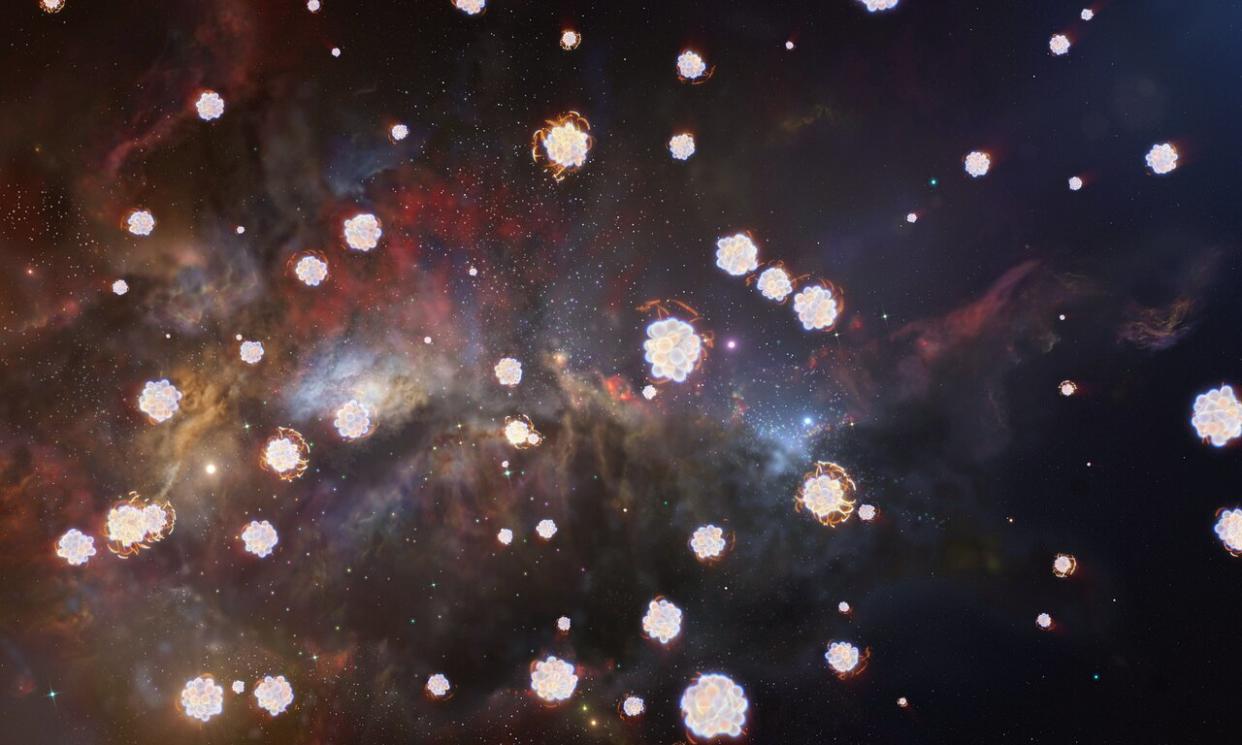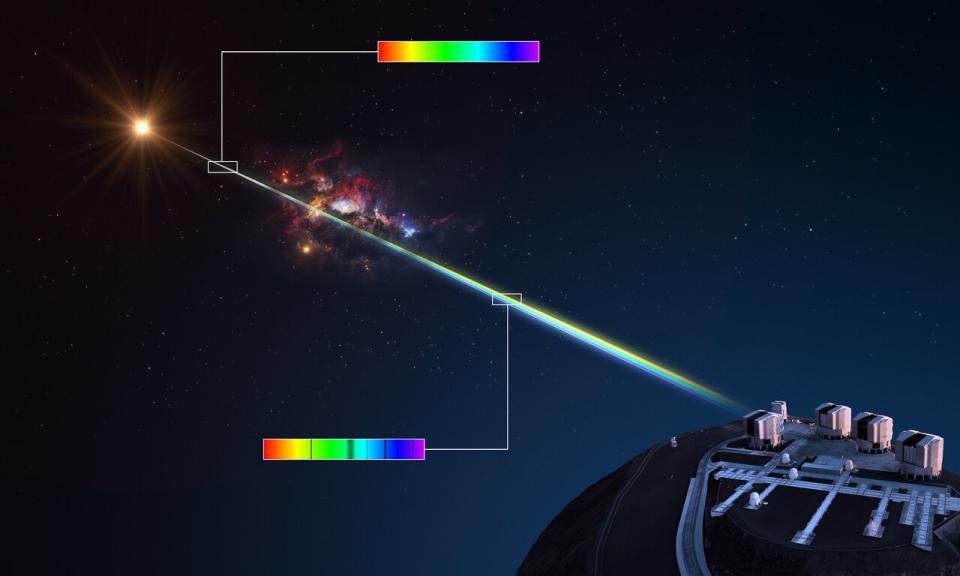Guts of the universe's 1st stars found in distant gas clouds

Astronomers have found the chemical remains left behind by the universe's first stars after they died in massive cosmic explosions called supernovas.
The stellar remains were discovered for the first time in distant gas clouds by astronomers using the Very Large Telescope (VLT) based in the Atacama Desert in northern Chile.
The find could help scientists better understand the conditions of the universe shortly after the Big Bang, when the universe was just around 300,000 years old and the first stars were being born.
Related: Supernova photos: Great images of star explosions
"We detected three distant gas clouds with a chemical fingerprint matching what we expect from the first stellar explosions," study leader and Observatoire de Paris Ph.D. student Andrea Saccardi told Space.com via email.
The new findings offer a way of indirectly studying this first generation of stars, study co-author Stefania Salvadori, an associate professor in the University of Florence's Physics and Astronomy Department, explained to Space.com via email.
"We can use these studies to complement stellar archeology and uncover the nature of the first stars and the first supernovas," she continued.
The first generation of stars that formed 13.5 billion years ago was very different from the stellar bodies we see in the universe today. This is because they were born when the universe was filled mostly with hydrogen and helium, with only traces of heavier elements, which astronomers call "metals." As a result, these stars were rich in hydrogen and helium but were also metal-poor.
During their lives, these stars performed nuclear fusion, taking atoms of hydrogen and helium and forging progressively heavier atomic elements. This also created the light these stars radiated and the energy that supported them against collapse under their own gravity. Once the stars ran out of fuel for nuclear fusion, the balance against outward radiation pressure and inward gravitational pressure ended, with gravity winning out.
As a result, the stars' cores collapsed while the outer layers were blown away in massive supernova blasts. This distributed the elements forged in this first generation of stars, such as carbon, oxygen and magnesium, which are present in the outer layers of stars, into the cosmos. This material then became the building blocks of the second generation of stars.
As a result, stars descended from earlier stellar bodies are richer in heavier elements, and thus as stars are born later and later in the history of the 13.8 billion-year-old universe, they become progressively less metal-poor. Despite their tremendous power, these first supernovas were still too weak to disperse very heavy elements like iron located mainly in the cores of these first stars.
So, when astronomers search for the chemical remains of these early stars and for second-generation stars, they look for plenty of carbon and other elements mixed with very little iron.
Related: James Webb Space Telescope spies most ancient galaxies ever observed

Finding the first stellar ashes
To discover these chemical imprints, the study team looked at the light from distant quasars, intense sources of radiation powered by feeding supermassive black holes, as it passes through gas clouds. Different elements absorb light at different wavelengths, leaving a fingerprint in the light from background quasars that can be read by astronomers to determine the composition of the cloud.
The chemical fingerprints seen in the three clouds spotted by the study team match the template for enrichment by the first supernovas. This fingerprint has, according to Saccardi, also been observed in many old stars in our Milky Way galaxy, which researchers consider to be second-generation stars that formed directly from the "ashes" of the first ones.
"These faraway clouds in the early universe have a very low iron content but plenty of carbon and other light elements," Saccardi added. "Indeed, in the Milky Way, several ancient stars show a small iron content and a large excess of carbon and other light elements as our gas clouds."
RELATED STORIES:
— Supernova alert! Astronomers just found a way to predict explosive star deaths
— Astronomers discover traces of 'super-supernovas' that destroyed earliest stars
— Elusive new type of supernova, long sought by scientists, actually exists
Salvadori added that these chemical signatures from the first stars may have thus far evaded detection because the search for them has focused on dense gas clouds that could sustain star formation after the gas had been enriched by the first supernovas.
"In other words, subsequent generations of 'normal,' more metal-rich supernovas were able to further pollute these dense gas clouds, thus erasing the chemical fingerprints of the first stars," Salvadori said. "We instead analyzed the chemical composition of more diffuse gas clouds and pinpointed the fingerprints of the first stars. This success is a consequence of a tight synergy between theory and observations."
The team said that they will now attempt to better understand the nature of these gas clouds and aim to discover how prevalent they have been throughout the history of the universe.
"First of all, we have to look for other systems with the same chemical composition as those we have found," Saccardi said. "Looking into the farthest future, a significant step forward in the analysis of these faraway gas clouds will be represented by the Extremely Large Telescope (ELT). Thanks to its collecting power and its high-resolution spectrograph, ANDES, we will carry out detailed chemical investigations, resolving faint metal absorption lines and determining significant constraints on key elements."
The team's research was published on Wednesday (May 3) in The Astrophysical Journal.
Follow us on Twitter @Spacedotcom or Facebook.

